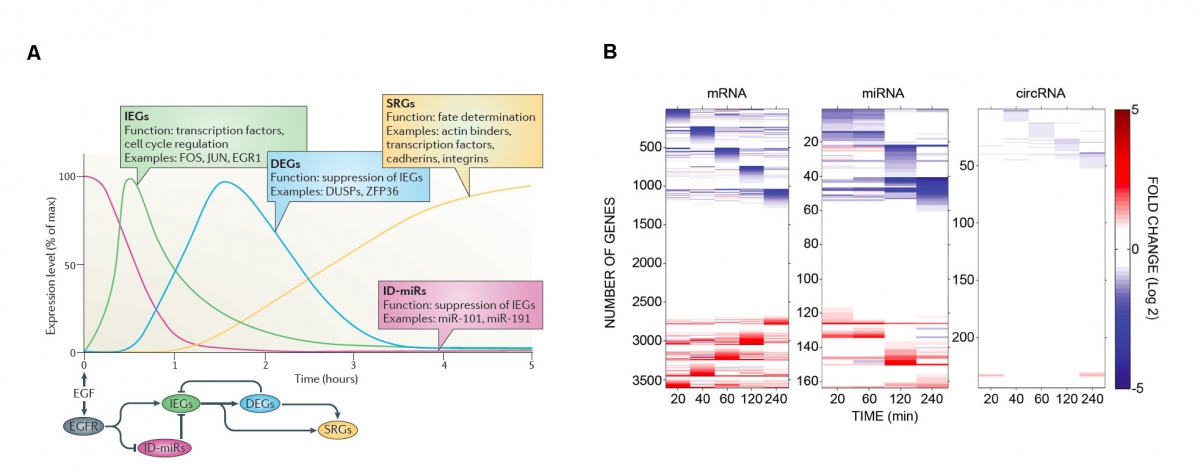Regulation of signaling pathways entails feedback and feedforward loops that underlie cellular responses to external stimuli. Deviations from this tight regulation might propel changes that can be pathogenic and lead to the development and progression of cancer, among other diseases. In recent years, non-coding RNAs emerged as critical regulators of gene expression by acting predominantly at the post-transcriptional level8, 9. Our research within the non-coding RNAs domain focuses specifically on microRNAs (miRNAs)10, 11, circular RNAs (circRNAs)12 and long non-coding RNAs (lncRNAs) – (see the picture below). and has established over the past few years their role in signaling networks upon EGF treatment.

Wave-like regulation of mRNAs, mRNAs and circRNAs by EGF. A – Cyclic transitions between a resting cellular state and an active state involve several binary switches that are able to control the kinetic profile of immediate early genes (IEGs). The onset of the cycle is induced by an extracellular stimulus, such as epidermal growth factor (EGF). The earliest event involves the immediate turnover of a group of microRNAs (immediately downregulated microRNAs (ID-miRs)), which allows the onset of IEG induction. Subsequently, IEGs induce the transcription of delayed early genes (DEGs, for example, the RNA-binding protein ZFP36, and the dual specific phosphatases (DUSPs)) that dephosphorylate mitogen-activated protein kinases (MAPKs), which shut down the activity of IEGs. B - Unlike mRNAs and microRNAs, circular RNAs of mammary cells display minor changes in response to an extracellular cue.


